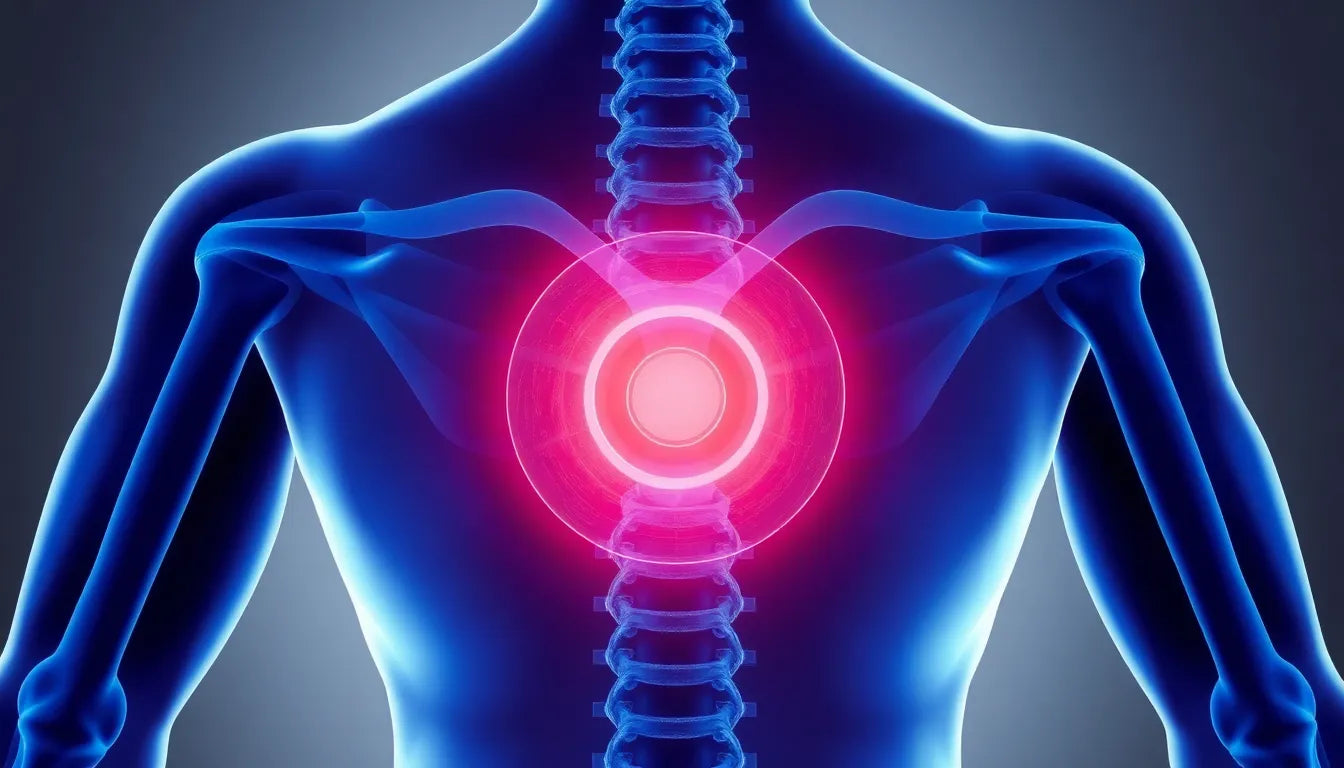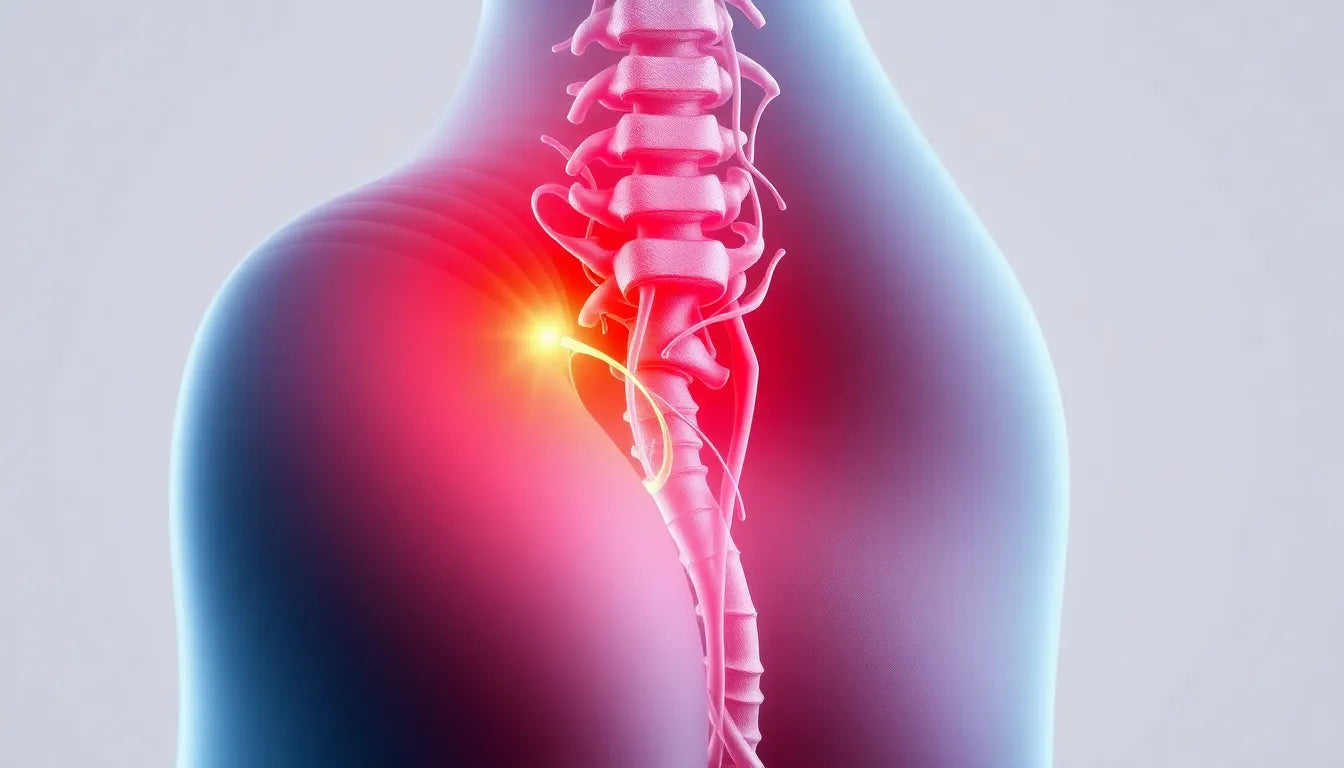Nerve sciatica is a condition that affects millions of people worldwide, often causing significant discomfort and disruption to daily life. This condition is notorious for its debilitating impact, leading to challenges in mobility and persistent pain that can hinder even the simplest of tasks. Whether it's the sharp, shooting pain that radiates from the lower back down to the legs or the constant numbness and tingling sensations, sciatica can become a constant companion for those afflicted.
understanding nerve sciatica
Sciatica is primarily a nerve condition that arises when there is pressure on the sciatic nerve. The sciatic nerve, the largest in the body, runs from the lower back through the hips and buttocks and extends down each leg. When this nerve is compressed or irritated, it results in the characteristic pain and discomfort associated with sciatica. This condition is not just a simple backache; it involves complex nerve pathways that can affect various parts of the body, making it a particularly challenging ailment to endure.
the impact of sciatica on daily life
The impact of sciatica is far-reaching, affecting not only physical health but also emotional well-being. The pain can be severe enough to limit physical activity, making it difficult to perform daily tasks or engage in enjoyable activities. This can lead to a sense of frustration and helplessness, as individuals struggle to maintain their usual lifestyle. Moreover, the condition can contribute to poor sleep quality, further exacerbating the feeling of fatigue and reducing the overall quality of life.
exploring relief through lifestyle changes
Despite the challenges posed by sciatica, there is hope for those seeking relief. Simple lifestyle changes can offer significant improvements in managing the condition. By adopting certain habits and making adjustments to daily routines, individuals can alleviate pain and regain control over their lives. This blog post will delve into these lifestyle modifications, providing practical solutions for those looking to reduce the impact of sciatica and enhance their well-being. From ergonomic adjustments to regular exercise and mindful practices, there are various strategies that can help manage the symptoms and improve quality of life.
understanding nerve sciatica in depth
Nerve sciatica is a condition characterized by pain that follows the path of the sciatic nerve, which extends from the lower back, through the hips and buttocks, and down each leg. As the largest nerve in the body, the sciatic nerve, measuring approximately 2cm wide, is crucial in connecting the spinal cord with the skin and muscles of the thighs, legs, and feet. When this nerve is compressed or irritated, it results in the distinct pain and discomfort associated with sciatica.
common causes of sciatica
The onset of sciatica is often linked to several underlying conditions that place pressure on the sciatic nerve. One of the most prevalent causes is a herniated or slipped disc, where the soft center of a spinal disc pushes through a crack in the tougher exterior casing. This can press on nearby nerves, including the sciatic nerve. Additionally, spinal stenosis, a narrowing of the spinal canal, can compress the nerve roots.
Other causes include compression from bone or muscle injuries, tumors, or infections. Pregnancy-related changes, such as weight gain and hormonal shifts, can also lead to sciatica by increasing pressure on the sciatic nerve. Conditions like piriformis syndrome, where the piriformis muscle in the buttocks irritates the sciatic nerve, and perineural scarring, which involves scar tissue forming around a nerve, are also known contributors.
recognizing symptoms
The symptoms of sciatica can vary widely in intensity and nature. Pain is the most common symptom, often radiating from the lower back down to the leg. This pain can range from a mild ache to a sharp, burning sensation. Some individuals may also experience numbness or tingling sensations in the affected leg. Symptoms can be exacerbated by prolonged sitting, sudden movements, or activities that involve bending the spine.
effective treatment approaches
Managing sciatica involves a combination of self-care measures, medications, physical therapy, and in some cases, surgical intervention. For many, self-care approaches, such as hot and cold therapy, can help reduce inflammation and soothe pain. Rest and using supportive pillows to maintain proper posture are also beneficial.
medication options
Over-the-counter anti-inflammatory drugs can provide relief from mild pain. For more severe cases, prescription medications, including anti-seizure drugs, muscle relaxants, and opioids, may be recommended by healthcare providers. These medications can help manage pain and reduce muscle spasms associated with sciatica.
the role of physical therapy
Physical therapy plays a crucial role in the treatment of sciatica. Exercises aimed at improving posture and strengthening the muscles of the back, abdomen, and legs can alleviate pressure on the sciatic nerve. A physical therapist can tailor a program to suit individual needs, focusing on exercises that promote flexibility and core strength.
interventional procedures and surgery
For individuals with severe or persistent sciatica, interventional procedures such as steroid injections may be considered. These injections can reduce inflammation around the nerve root and provide temporary relief. Ultrasound-guided procedures are another option to target pain relief more precisely.
Surgery is typically considered a last resort when other treatments fail to provide relief. Surgical options may involve removing part of a herniated disc or widening the spinal canal to alleviate pressure on the nerve.
Understanding the various causes and symptoms of sciatica is essential in managing the condition effectively. By exploring a range of treatment options, individuals can find relief and improve their quality of life. In the next section, we will delve into lifestyle changes that can further aid in alleviating sciatica symptoms, providing practical solutions for those seeking to enhance their well-being.
lifestyle changes for sciatica relief
Making certain lifestyle changes can significantly aid in managing nerve sciatica, reducing pain, and improving overall quality of life. Here, we explore practical adjustments that can make a substantial difference for those suffering from this condition.
ergonomic adjustments
Creating an ergonomic environment is crucial for minimizing strain on the back and reducing sciatica symptoms. Investing in ergonomic aids, such as lumbar support cushions and adjustable chairs, can help maintain proper posture and alleviate pressure on the sciatic nerve. For those working in office settings, setting up a workspace that promotes good posture is essential. This includes positioning the computer screen at eye level, keeping feet flat on the floor, and ensuring that the chair provides adequate support to the lower back.
regular exercise
Engaging in regular physical activity is beneficial for maintaining flexibility and strength, which can help alleviate sciatica symptoms. Low-impact exercises such as walking, swimming, and yoga are particularly effective. These activities help improve circulation, reduce inflammation, and strengthen muscles that support the spine. Additionally, specific stretches targeting the lower back and legs, such as hamstring stretches and pelvic tilts, can relieve tension and reduce pain.
mindful practices
Incorporating mindful practices into daily routines can also play a role in managing sciatica pain. Techniques such as meditation, deep breathing exercises, and progressive muscle relaxation can help reduce stress and improve pain perception. By focusing on the mind-body connection, individuals can learn to manage their response to pain, which can lead to a reduction in overall discomfort. These practices not only aid in pain management but also contribute to improved mental health and well-being.
frequently asked questions
How does someone get sciatica to go away?
Managing sciatica involves a combination of rest, physical therapy, and ergonomic adjustments. By incorporating these elements into daily life, individuals can significantly reduce symptoms and improve their condition.
What triggers sciatica?
Common triggers for sciatica include prolonged sitting, poor posture, sudden movements, and heavy lifting. These activities can exacerbate pressure on the sciatic nerve, leading to increased pain and discomfort.
What relaxes the sciatic nerve?
Gentle stretching, hot and cold therapy, and muscle relaxants are effective methods for soothing the sciatic nerve. These approaches help reduce inflammation and relieve tension, providing comfort and relief from pain.
What should someone not do with sciatica?
Individuals with sciatica should avoid activities that strain the back, such as heavy lifting and sitting for extended periods without breaks. It is important to maintain good posture and take regular breaks to stretch and move around.
By focusing on these lifestyle changes and understanding the condition, individuals can find relief and improve their quality of life despite sciatica. Implementing ergonomic adjustments, engaging in regular exercise, and practicing mindfulness are all effective strategies for managing symptoms and enhancing well-being.
Sources
- Cleveland Clinic. (2023). "Sciatica."
- Mayo Clinic. (2023). "Sciatica - Symptoms and Causes."
- Medical News Today. (2023). "What is Sciatica?"
- Health Direct. (2023). "Sciatica."
- Hospital for Special Surgery. (2023). "Sciatica."
- TeachMeAnatomy. (2023). "The Sciatic Nerve."
- WebMD. (2023). "Sciatica Symptoms."


















